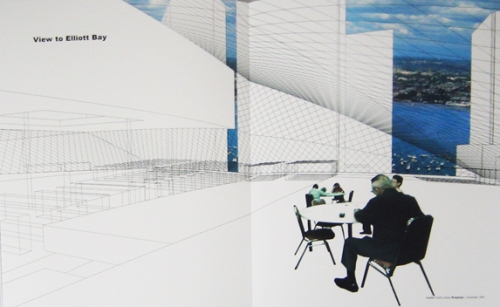An 18 minute audio tour of Seattle’s Central Library warmly guided by Diana from the SPL represents the library in this instance. This audio tour was intended to be downloaded by patrons to their mp3 player and used while visiting the library. Despite the listener being guided by the sound, where the narrator frequently gives indications and directions to follow the predefined route, this representation is complemented by the library vertical map available at the entrances of the building on a small scale, and by the actual spaces of the library on a larger scale. Without these other elements, the audio recording loses its meaning. Therefore, we observe in it a resistance to the creation of a single bubble of privatized space inherent to the delivery system of this audio file in personal mobile sound system. This audio track attempts to engage the listener with other people by featuring several “encounters” with librarians on different places, who explain the resources available and the underlying concepts of the spaces. It also aims at engaging the listener with the physical spaces by encouraging the listeners to pause the sound recording and explore the spaces on their own, at their own pace, which is demonstrated by the discrepancy between the actual length of the track -18 minutes- and the expected length of the tour -between 30 and 40 minutes.

